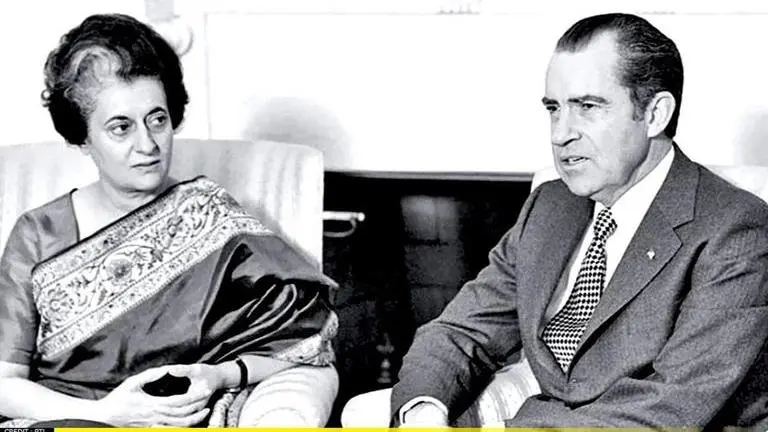Updated 5 September 2020 at 17:04 IST
Ex-US Prez Richard Nixon termed Indian women 'most unattractive' say declassified papers
Former US President Richard Nixon had called Indian women 'the most unattractive women in the world' in a conversation with his NSA Henry Kissinger in 1971
- World News
- 3 min read

In a shocking display of racism, Former US President Richard Nixon had called Indian women 'the most unattractive women in the world' in a conversation with his National Security Advisor Henry Kissinger, according to a New York Times (NYT) article. The article based on newly declassified White House tapes from 1971, allegedly revealed the utter disregard Nixon held not only for Indians but also the Pakistanis - who were backed by the USA in the 1971 Indo-Pak war which led to the formation of Bangladesh. The article reveals Nixon calling Indians as 'most sexless, nothing, these people and pathetic' while referring to Pakistanis as 'fine people, but primitive in their mental structure', in a private conversation with Kissinger.
Nixon: 'Indians most sexless'
Moreover, during a conversation with then-Prime Minister Indira Gandhi, Nixon reportedly told Kissinger, “They turn me off. They are repulsive and it’s just easy to be tough with them,” in a White House summit with Gandhi amid the 1971 war. The article claims that Kissinger held himself above Nixon's bigotry, but the tapes do not show him opposing Nixon's views. But Kissinger, who opposed India sheltering to refugees who had fled from then-East Pakistan, had reportedly told Nixon that Indians were 'masters at flattery' and had allegedly 'survived 600 years with their great skill to suck up to people in key positions'.
The article has evoked outrage among Indian and Pakistani Twitterati:
What POS these people !! Racism is embedded in Republican party
— Kashif Qureshi (@kasqures) September 4, 2020
If one can bring in Winston Churchill in this grouping , we'd know how vile this entire lot was towards Indians.
— Truth of (@indian_politics) September 5, 2020
We survived coz of Soviets.
Lest, we forget!!!
So babies in India come from the sky?
— Sneha Jha (@SnehaJh58628564) September 5, 2020
What about Miss world, Miss Universe titles won by India?
1971 Indo-Pak war
The 1971 war was fought between India and Pakistan leading to Pakistan losing its Eastern part - forming Independent Bangladesh. The war started when Pakistan launched airstrikes on 11 Indian airbases, which led to all three Indian Armed Forces wing - Army, Navy, and Airforce attack and capture around 15,010 kilometers of Pakistan territory. The war which lasted for a mere 13 days was due to Bangladesh seeking freedom from (West) Pakistan as the Pakistan Army began to commit genocide on East Pakistan's Bengali population - particularly the minorities.
Advertisement
To put an end to Pakistan's atrocities, then-Indian PM Indira Gandhi decided to offer refuge to East Pakistani civilians while ordering Army Chief General Sam Manekshaw to launch an offensive against Pakistan, while led to a full-blown war. While the Indian Army took 93,000 Pakistani prisoners and liberated 75 million Bangladeshis, over 3,800 soldiers of India and Pakistan laid down their lives. Estimates claim that civilian casualties are between 300,000 and 3,000,000 in Bangladesh.
Advertisement
While Gandhi did not wish to escalate the attack into war, she appealed to world leaders to pressurise Pakistan to stop its atrocities. But the then-US President Nixon had secretly the USS Enterprise and the Task Force-74 of the United States Seventh Fleet into the Indian Ocean to allegedly warn India against escalation, while publically threatening to cut-off aid to Pakistan. He also termed India as a 'Soviet stooge' as India had signed an agreement with the Soviet Union in 1971 as a guarantee against possible Chinese attacks on its Western front during the Indo-Pak war. On August 2, 1972, India and Pakistan signed the Shimla Agreement under which the former agreed to release all the 93,000 Pakistani prisoners of war.
Published By : Suchitra Karthikeyan
Published On: 5 September 2020 at 17:04 IST
